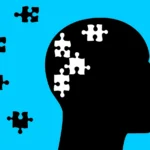Can Trauma Kill? Understanding the Danger

Understanding the Danger inherent in trauma transcends mere academic curiosity; it speaks to the very essence of what it means to be human, thus the question: Can Trauma Kill? No, but trauma possesses a tough power to shape and reshape the course of human existence, leaving an indelible mark on body, mind, and soul.
From the battlefield to the confines of the human psyche, trauma has woven its intricate web, ensnaring millions in its suffocating embrace.
In this blog post, we embark on a journey of discovery, delving into the depths of trauma’s dark domain to unravel its mysteries and unearth its deadly potential.
What is trauma?
According to the American Psychological Association (APA), trauma is “an emotional response to a terrifying event such as an accident, rape, or natural disaster.””
However, a person may experience trauma as a response to any event they find physically or emotionally threatening or harmful.
A traumatized person can feel a range of emotions immediately and for a long time after the incident. They may feel overwhelmed, helpless, shocked or have difficulty processing their experience. Trauma can also cause physical symptoms.
Trauma can have long-term effects on human health. If the symptoms persist and the severity does not decrease, it can indicate that the trauma has developed into a mental health disorder called post-traumatic stress disorder (PTSD).
Types of trauma
*Acute trauma: This is caused by a single stress or dangerous event.
*Chronic trauma: This is caused by repeated and prolonged exposure to highly stressful events. Examples include child abuse, bullying, or domestic violence.
*Complex trauma: This is due to exposure to multiple traumatic events.
Secondary trauma or alternative trauma is another form of trauma. Through this form of trauma, a person develops traumatic symptoms through close contact with a person who has experienced a traumatic event.
Family members, mental health professionals, and others who take care of those who have experienced traumatic events are all at risk of alternative trauma. Symptoms often reflect post-traumatic stress disorder.

The Complex Relationship: Trauma and Mortality
At the intersection of trauma and mortality lies a labyrinthine relationship, intricately woven yet perilously fragile.
While trauma may not wield the swift blade of mortality, its insidious influence can sow the seeds of decay, gradually eroding the foundations of vitality.
Understanding this complex interplay is paramount in navigating the treacherous terrain of human suffering.
The Physiology of Trauma
Stress Response: How the Body Reacts
When confronted with trauma, the body unleashes a symphony of physiological responses, orchestrated by the primal instinct for survival.
The heart races, muscles tense, and senses sharpen in preparation for the impending threat. This intricate dance between the sympathetic nervous system and the hypothalamic-pituitary-adrenal axis primes the body for action, ready to confront or flee from danger.
Impact on Vital Organs: Understanding the Damage
Yet, beneath the veneer of heightened alertness lies a cascade of biochemical changes that can wreak havoc on vital organs.
Chronic exposure to stress hormones, such as cortisol and adrenaline, exacts a toll on the cardiovascular system, predisposing individuals to hypertension, heart disease, and stroke.
Moreover, the immune system, tasked with warding off invaders, becomes dysregulated, leaving the body vulnerable to infection and disease.
Long-Term Effects: Chronic Illness and Trauma
The aftermath of trauma extends far beyond the immediacy of the event, casting a long shadow over one’s health and well-being.
Emerging research suggests a profound link between unresolved trauma and the development of chronic illnesses, including autoimmune disorders, metabolic syndrome, and even cancer.
As the body struggles to cope with the lingering echoes of trauma, the specter of mortality looms ever larger on the horizon.
Psychological Impact of Trauma
Mental Health Consequences: Beyond the Physical
While the physical toll of trauma is readily apparent, its psychological repercussions are no less profound.
From debilitating anxiety to debilitating depression, the psychological fallout of trauma can permeate every facet of one’s existence, eclipsing the light of hope with the shadow of despair.
Left unaddressed, these invisible wounds can metastasize, consuming the very essence of what it means to be human.
Trauma and the Brain: Understanding Neural Pathways
Within the obscure corridors of the brain, trauma leaves an indelible imprint, reshaping neural pathways and altering the very fabric of thought and emotion.
The amygdala, the brain’s fear center, becomes hypersensitive, triggering exaggerated responses to perceived threats.
Meanwhile, the prefrontal cortex, responsible for rational decision-making and emotional regulation, struggles to assert its influence, overshadowed by the primal instincts unleashed by trauma’s grip.
PTSD: The Lingering Shadow of Trauma
For some, the specter of trauma refuses to recede into the recesses of memory, instead haunting their every waking moment with relentless intensity.
Post-traumatic stress disorder (PTSD), a maladaptive response to trauma, ensnares its victims in a web of intrusive memories, flashbacks, and nightmares, perpetuating a cycle of suffering that knows no respite.
As the line between past and present blurs, the prospect of mortality becomes an ever-present reality, looming on the horizon like a dark storm cloud.

The Interplay of Physical and Mental Health
The Mind-Body Connection: How Trauma Affects Health
In the intricate dance between mind and body, trauma serves as a discordant melody, disrupting the harmonious rhythm of health and vitality.
The psychological distress wrought by trauma reverberates throughout the body, triggering inflammatory processes that fuel the flames of disease.
Conversely, chronic illness can serve as a breeding ground for trauma, amplifying its impact and perpetuating a vicious cycle of suffering.
Co-Occurring Conditions: The Vicious Cycle
Compounding the complexity of trauma is the prevalence of co-occurring conditions, which intersect and intertwine in a tangled web of suffering.
Substance abuse, chronic pain, and mood disorders often coalesce around trauma, exacerbating its effects and ensnaring individuals in a downward spiral of despair.
Untangling this web requires a holistic approach that addresses the interconnected nature of physical and mental health, recognizing that healing must encompass the entirety of the human experience.
Treating the Whole Person: Integrative Approaches
In the pursuit of healing, a one-size-fits-all approach falls woefully short, failing to acknowledge the multidimensional nature of trauma and its impact on health and well-being.
Instead, a comprehensive treatment paradigm must embrace the principle of holistic care, addressing not only the symptoms of trauma but also the underlying causes.
From psychotherapy and medication management to mindfulness practices and somatic experiencing, an integrative approach offers hope for those ensnared in trauma’s grip, illuminating a path toward healing and wholeness.
Societal Factors
Cultural Perspectives on Trauma
Trauma is not merely an individual phenomenon but a societal one, shaped and influenced by cultural norms, values, and beliefs.
Across cultures, the perception and response to trauma vary widely, reflecting the unique tapestry of human experience.
Understanding these cultural nuances is essential in providing culturally competent care that honors the diversity of human resilience and vulnerability.
Socioeconomic Status: How it Amplifies Trauma
In the crucible of socioeconomic inequality, trauma finds fertile ground to flourish, perpetuating a cycle of suffering that disproportionately impacts marginalized communities.
From lack of access to quality healthcare to systemic barriers that perpetuate poverty and discrimination, socioeconomic status plays a pivotal role in amplifying the impact of trauma.
Addressing these structural inequities is essential in creating a more just and equitable society where all individuals have the opportunity to heal and thrive.
Access to Resources: Breaking the Cycle of Trauma
Central to the fight against trauma is ensuring equitable access to resources that promote resilience and recovery.
From trauma-informed mental health services to community-based support networks, investing in resources that empower individuals to heal and rebuild their lives is essential in breaking the cycle of trauma.
By fostering a culture of support and compassion, we can create a world where trauma no longer holds sway over the lives of the vulnerable and marginalized.
Trauma Across the Lifespan
Childhood Trauma: Shaping Future Health
The seeds of trauma are often sown in childhood, shaping the trajectory of one’s health and well-being for years to come.
From adverse childhood experiences (ACEs) to chronic neglect and abuse, the scars of early trauma run deep, leaving an indelible imprint on the developing brain and body.
Recognizing and addressing childhood trauma is essential in fostering resilience and preventing the onset of chronic illness later in life.
Adverse Childhood Experiences (ACEs): A Predictor of Mortality
The impact of adverse childhood experiences (ACEs) reverberates far beyond the formative years, casting a long shadow over one’s health and mortality.
Studies have shown a strong correlation between ACEs and a host of physical and mental health outcomes, including cardiovascular disease, diabetes, and premature death.
By addressing ACEs early and providing targeted interventions, we can mitigate the long-term consequences of childhood trauma and pave the way for a healthier future.
Trauma in Older Adults: Understanding the Cumulative Effect
As we age, the cumulative toll of a lifetime of trauma becomes increasingly apparent, manifesting in a myriad of physical and psychological symptoms.
From the silent epidemic of elder abuse to the trauma of loss and isolation, older adults are particularly vulnerable to the ravages of trauma.
Understanding the unique needs of this population and providing tailored interventions is essential in promoting dignity, autonomy, and quality of life in later years.
Prevention and Invention
Early Intervention: Mitigating Long-Term Consequences
The adage “an ounce of prevention is worth a pound of cure” rings especially true in the realm of trauma.
By identifying and addressing trauma early, we can mitigate its long-term consequences and prevent the onset of chronic illness and disability.
From trauma-informed education and parenting programs to community-based interventions, early intervention holds the key to breaking the cycle of trauma and fostering resilience across the lifespan.
Trauma-Informed Care: Shifting Perspectives in Healthcare
In the hallowed halls of healthcare, a paradigm shift is underway, as providers recognize the integral role of trauma in shaping health and well-being.
Trauma-informed care seeks to create a safe and supportive environment that acknowledges the impact of trauma on patients’ lives and empowers them to actively participate in their healing journey.
By fostering a culture of compassion, empathy, and collaboration, healthcare providers can pave the way for more effective and equitable care that honors the dignity and humanity of every individual.
Community Support: Building Resilience
At the heart of healing lies the power of community, as individuals come together to support and uplift one another in times of need.
From peer support groups and community centers to grassroots organizations and advocacy efforts, community support plays a pivotal role in building resilience and fostering recovery from trauma.
By nurturing a sense of belonging and connection, communities can serve as a beacon of hope in the darkest of times, offering solace and solidarity to those grappling with the aftermath of trauma.
Conclusion
As we journey through the intricacies of trauma and mortality, one question lingers in the recesses of our minds.
Can trauma truly kill? While the answer may not be as straightforward as we’d like, one thing remains abundantly clear: trauma possesses a formidable power to shape and reshape the course of human existence, leaving an indelible mark on body, mind, and soul.
In the face of such profound challenges, the call to action resounds loud and clear: we must raise awareness, advocate for change, and stand in solidarity with those affected by trauma.
Whether through grassroots activism, policy advocacy, or individual acts of compassion, each of us has a role to play in building a more compassionate and resilient world.
Together, we can harness the power of human connection to heal the wounds of trauma and pave the way for a brighter, more hopeful future.









